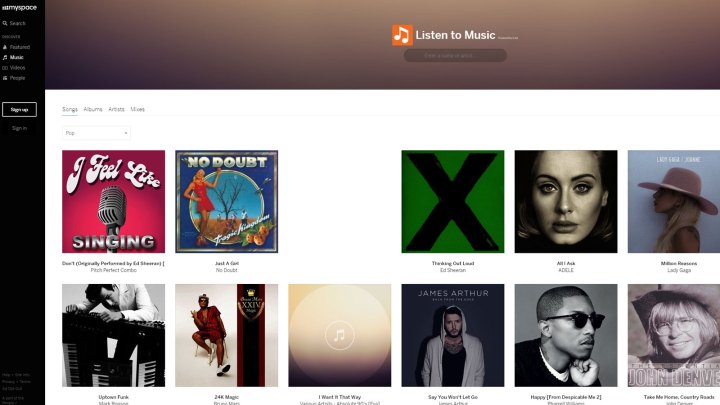
MySpace has apologized to users who stored music and other creative content on the social network, claiming that during a server migration large quantities of photos, videos, and music were lost. This has left many fans unable to access old bands they enjoyed and many artists who have long since moved on from their musical or other artistic endeavors. In some cases, this means that certain songs, images, and videos are lost forever.
The relevance of MySpace has long since waned, but once upon a time, it was the most popular site in the U.S. with more than 100 million members. Although it lost out to new social networks like Facebook and Twitter, MySpace held millions of publicly accessible songs and other artistic content for years — even rebranding itself as a source for new music in 2013. However, this server move debacle has reportedly lead to the corruption and unavailability of more than 50 million songs, as well as untold numbers of videos and photos that were uploaded between 2003 and 2015.
“As a result of a server migration project, any photos, videos, and audio files you uploaded more than three years ago may no longer be available on or from MySpace,” the company said in a statement. It directed those affected who want greater clarity on the situation to contact its data protection officer.
While this issue has only recently come to light on a grander scale, it’s something MySpace fans have been dealing with for over a year. Reddit threads date back to February 2018 that note problems with playing songs on the platform. At that time, MySpace acknowledged the issue and claimed that it was working on a fix. That fix never materialized, however, and at this point, it seems unlikely if any of the lost content will ever be recovered.
This has angered many MySpace fans and those who considered the site as an archive of a bygone era of the internet. Others, like Kickstarter’s former chief technical officer Andy Baio, registered deep skepticism at the idea of data being lost during a transfer. He and others have suggested that the data may have been deliberately mismanaged to avoid having to carry the deadweight of more than a decade’s worth of user-generated content.
Editors' Recommendations
- X rival Threads could be about to get millions of more users
- Twitter begins testing new Spaces functionality for Twitter Communities



